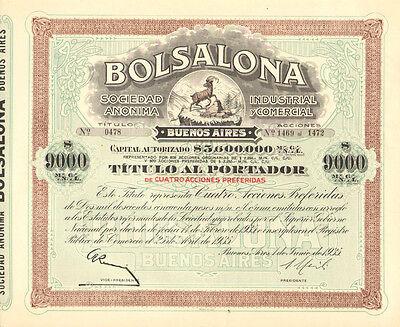Argentina’s government bonds experienced gains in a volatile trading session on Monday, as investors closely monitored signals from the United States regarding potential support for the South American nation’s debt restructuring efforts. The fluctuations in bond prices reflect cautious optimism amid ongoing economic challenges and uncertainty over the details of U.S. backing. Market participants remain attentive to forthcoming policy announcements that could influence Argentina’s fiscal outlook and access to international financing.
Argentina Bonds Gain Amid Volatile Trading as Market Awaits US Policy Signals
Argentina’s sovereign bonds experienced a notable upswing amid a turbulent trading session marked by cautious optimism. Investors appeared encouraged by indications of potential supportive measures from the United States, despite lingering concerns over global economic uncertainties. This dynamic led to increased buying activity, particularly in medium-term debt issues, as traders weighed risk against the prospect of a more accommodative US policy stance. Market participants also remain alert to upcoming US Federal Reserve communications, which are expected to further influence emerging market assets.
- Bond Yield Movements: 10-year notes dropped by 25 basis points, narrowing spreads.
- Trading Volume: Surged to a two-week high, signaling renewed investor interest.
- Currency Impact: Argentine peso showed marginal strengthening against the dollar.
| Bond Maturity | Yield Change (%) | Closing Price (USD) |
|---|---|---|
| 2026 | -0.24 | 82.15 |
| 2029 | -0.18 | 79.48 |
| 2035 | -0.30 | 74.60 |
Despite the gains, volatility remains high as geopolitical developments and domestic fiscal challenges continue to weigh on investor sentiment. Analysts stress that while the recent rally reflects a tentative vote of confidence, the long-term trajectory for Argentina’s debt markets hinges on both internal reforms and the broader international policy environment. Monitoring key economic indicators and US monetary policy updates will be critical in the days ahead for gauging further momentum.
Investors Monitor US Support Commitment to Gauge Impact on Argentine Debt Recovery
Investor sentiment in the Argentine debt market showed signs of tentative optimism during a volatile trading session. Market participants closely tracked declarations from U.S. officials indicating potential support for Argentina’s debt restructuring efforts. This cautious hope lifted Argentine bond prices after days of uncertainty, underscoring the critical role of international backing in shaping investor confidence. However, the fluctuations reflected ongoing skepticism about the tangible impact and timeline of such U.S. commitments amid Argentina’s complex economic challenges.
Key factors influencing the market included:
- Clarification of the U.S. administration’s stance on financial aid and diplomatic engagement.
- Argentina’s recent economic reforms and fiscal targets.
- Global risk appetite amidst broader market volatility.
Below is a snapshot of recent Argentine bond performance relative to U.S. Treasury yields, illustrating the cross-market dynamics investors are monitoring:
| Bond | Price Change (Today) | Yield | U.S. 10-Year Yield |
|---|---|---|---|
| Argentina 2030 USD | +1.8% | 14.3% | 3.9% |
| Argentina 2027 USD | +1.3% | 12.5% | |
| Argentina 2041 USD | +0.9% | 15.2% |
Strategic Approaches for Navigating Argentina’s Bond Market in an Uncertain Global Environment
Investors in Argentina’s bond market are adopting a multi-faceted strategy to mitigate volatility amid global economic uncertainties. Key to this approach is closely monitoring geopolitical signals, particularly those emanating from the United States, whose commitment to economic support acts as a significant market signal. Market participants are balancing exposure by diversifying bond maturities and prioritizing instruments with stronger sovereign guarantees to manage risk more effectively. Additionally, dynamic hedging with foreign currency instruments has become a favored tool to protect portfolio value against peso depreciation and inflationary pressures.
Core strategic elements include:
- Selective maturity ladders: Targeting bonds with staggered maturities to capitalize on favorable yield curves while minimizing liquidity risks.
- Credit risk assessment: Intensive analysis of Argentina’s fiscal policy shifts and external debt repayments to gauge default probabilities.
- FX risk mitigation: Using derivatives and dual-currency exposure to cushion currency swings.
| Strategy | Purpose | Expected Outcome |
|---|---|---|
| Staggered Maturities | Spread default & reinvestment risk | Stable returns, flexibility |
| Risk-Adjusted Credit Analysis | Identify emerging fiscal risks | Informed allocation |
| Currency Hedging | Protect against peso volatility | Reduced exposure to FX losses |
Concluding Remarks
As Argentina’s bonds experienced a volatile session marked by cautious optimism, investors continue to closely monitor developments surrounding potential US support. While recent gains reflect tentative confidence, market participants remain wary of underlying economic challenges and the broader geopolitical landscape. Going forward, the interplay between international backing and domestic policy decisions will be critical in shaping Argentina’s financial trajectory.




